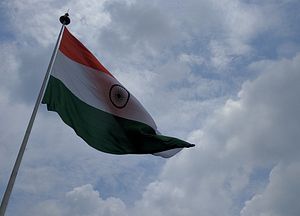One of the criticisms of globalization is that the benefits of economic growth have not translated into reducing inequality. On the contrary, it has widened inequality as only certain sections of society have seen economic gains.
In a report released in March 2016, the International Monetary Fund said that “Asian countries are unable to replicate the “growth with equity” miracle. IMF pointed out that inequality has only increased in the past two and a half decades, “lowering the effectiveness of growth to combat poverty and preventing the building of a substantial middle class.”
Likewise, Oxfam (the Oxford Committee for Famine Relief), a global charitable organization that focuses on alleviation of poverty and policy advocacy, highlights global inequality in its report, “An economy for the 99 percent,” released on January 17. Oxfam points out that eight billionaires from across the globe are as rich as the 3.6 billion people who make up the poorest half of the world’s population.
The report, which bases its findings on the wealth distribution data of Credit Suisse Global Wealth Data book 2016, and its information on the world’s richest people on Forbes’ billionaires list for 2016, blames the super rich for fueling the inequality crisis by dodging taxes, influencing politicians, and not paying fair wages to their employees. The report calls for a more humane economy that ensures that no one is left out of the benefits of economic growth.
In a special reference to India, the report says that 57 billionaires possess as much wealth as the poorest 70 percent of the country. The richest 10 percent in India own 80 percent of its wealth, while the richest 1 percent possess 58 percent of all wealth. While it is true that the super rich in India have accumulated wealth by dodging taxes — taking advantage of loopholes in the existing tax laws and also siphoning off their wealth to Switzerland and other tax havens — however, the government is also equally to be faulted for the existing tax structure. Moreover, as the super rich are big donors to the national political parties, the government has done little to bring them to book. Only recently has the Indian government begun acting on the information gathered from various tax havens.
Although Oxfam should be credited for raising the awareness of disparity in wealth distribution,to blame only the super rich for the growing inequality would be unfair. The real problem has to do with the redistribution of income. Many economists have pointed out that the one way of reducing inequality, especially in developing countries, is by increasing social spending on education, housing, and healthcare.
It is to the credit of the Indian government that they have been able to lift millions of people from poverty through various welfare schemes, but a large section of the society still remains in abject poverty. According to the International Food Policy Research Institute’s (IFPRI) 2016 Global Hunger Index (GHI), over 29 percent of the population in India are poor. For that very reason, as I pointed out in an earlier article published in The Diplomat, gross domestic product (GDP) is not a true indicator for measuring the well-being of a country’s people.
Even in the area of healthcare, Lancet’s “baseline analysis of the Global Burden of Disease Study 2015,” a project backed by the UN, ranked India 143rd out of 188 countries covered in the survey. India’s health-related SDG index is 42; the overall average global index is 59.
In the field of education, a study by UNESCO points out that India has the lowest public expenditure on education per student in the world among major economies. India spends Rs.18,000 per student per year compared to the Rs.122,760 spent by China. India spends around 3.8 percent on education against the global average of 4.3 percent. Similarly, total expenditure on health is less than 2 percent against the world average of 4.5 percent. As education and health are cornerstones in improving both social justice and economic productivity, India needs to invest heavily in these two sectors in improving the overall well-being of its people.
In its March 2016 report, the International Monetary Fund pointed out that in Asian countries including India, the rich are far more likely to have had four years of schooling than the poor. Similarly, there is a substantial gap in access to health care among high and low income households. The gaps are both symptoms of and factors in the growing inequality trend seen across the world.
As the true progress of a country can be measured only when the overall well-being of its citizens improves, emerging economies like India should focus on making affordable education available to all sections of society. The spread of education is the most effective way to create employment opportunities and also improve the economic conditions of the poor. Similarly, heavy social spending is required in healthcare and housing. All these measures would close the disparity in income between the rich and the poor. We have seen that China has succeeded in improving the economic lot of its people by investing heavily in education and in other social sectors. India can also learn from the Australian model, where the progress made in education, housing, and healthcare is tracked along with GDP.
K.S. Venkatachalam is an independent columnist and political commentator.

































